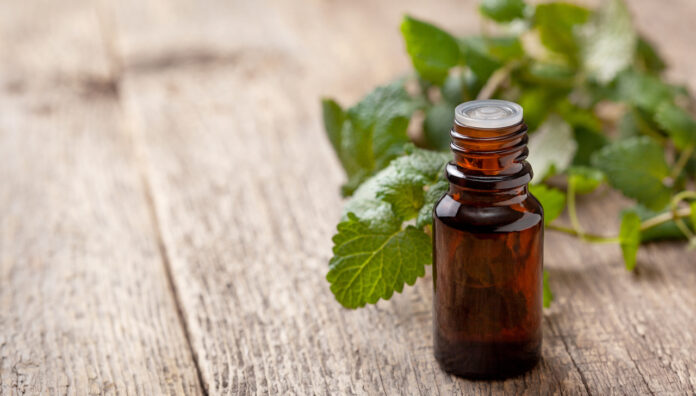From candy canes and tasty teas to digestive disorders and sniffly sinuses – this herb is a sweet treat that may help boost health.
Attracted by its appealing aroma, humans have been using peppermint in foods and remedies for millennia. And it all began thanks to a love triangle.1,3
According to Greek mythology, Minthe was a nymph living in one of the five rivers of the underworld. When Persephone, the queen of the underworld, heard her husband Hades was having an affair with Minthe, she turned the nymph into a weed-like plant, constantly underfoot. Hades softened the curse by giving Minthe a sweet smell that would remind people of her, well, sweetness as they walked on her.3,4
Pliny the Elder got the scent.3 The Roman philosopher wrote that it stimulated the appetite. Egyptians got it too. Archaeologists have discovered 3,000-year-old leaves inside the pyramids.1,3-5
Gradually peppermint spread to Europe, Scandinavia and the New World as a culinary aid and treatment for digestive disorders. It got a mention in the 1240 AD Icelandic Pharmacopoeia.5
In 1721 peppermint was first listed in the London Pharmacopoeia. As well as digestive disorders, peppermint was recommended for a host of ailments that include colds, headaches and sores.6
Peppermint’s popularity continued – and continues – to grow. Judging from the size of the area used to cultivate it, peppermint is the ‘most important commercial aromatic herb in the world today’, write Stella Kokkini and colleagues in the Encyclopedia of Food Sciences and Nutrition.12
What is peppermint?
Peppermint (Mentha piperita) is a perennial plant that grows to a height of about 1 metre. It has square stems, green leaves and pinkish lavender flowers. Products are made from the leaf and oil.6,9,13
The herb is a natural hybrid of water mint (M. aquatica) and spearmint (M. spicata) and belongs to the Lamiaceae family. Commercial peppermint is grown in North America, Asia and Europe. Australia’s peppermint industry occurs largely in Tasmania and Victoria.1,6,13,14
How it works
Although there are dozens of chemicals in peppermint oil, the main active ingredients are menthone, isomenthone and isomers of menthol. There are also flavonoids, phenolic acids and triterpenes.6,12,15
Working together, peppermint’s ingredients have several mechanisms of action. They relax muscles by blocking calcium channels and moderating the enteric nervous system.
They also reduce visceral organ pain via transient receptor potential channels. And in the lab they appear to kill some bacteria, viruses and fungi.7,10,16
Peppermint now
Today, peppermint is spruiked as a treatment for a potpourri of conditions, most commonly gastrointestinal disorders, headaches and colds. The fragrant herb is also sold as a breath freshener, energy booster and sleep enhancer, as well as a remedy for menstrual cramps, aching muscles, seasonal allergies and flagging concentration. It’s used topically and systemically.1,6-11
There is, however, only limited evidence of its efficacy. Most research has focused on irritable bowel syndrome.1,16 Still, medieval cheesemakers vowed peppermint kept mice and rats out of the storeroom.
And this writer swears peppermint oil dissuades cats from jumping on forbidden furniture.
References
-
- National Institutes of Health. National Center for Complementary and Integrative Health. Peppermint oil.
- Ratini M, reviewer. Health benefits of peppermint. Nourish. WebMed. 2021.
- Silva H. A descriptive overview of the medical uses given to Mentha aromatic herbs throughout history. Biology (Basel) 2020;9(12):484.
- Canadian Digestive Health Foundation. Peppermint fixes more than just bad breath. 2022: At: https://cdhf.ca/health-lifestyle/peppermint-fixes-more-than-just-bad-breath/
- Bodalska A, Kowalczyk A, Włodarczyk M, et al. Analysis of polyphenolic composition of a herbal medicinal product – Peppermint tincture. Molecules 2020;25(1):69.
- Wurges, J, Odle, T. Peppermint. Gale Encyclopedia of Alternative Medicine. Encyclopedia.com. 2022.
- Groves, M. 12 science-backed benefits of peppermint tea and extracts. Healthline. 2018.
- Fletcher J. Health benefits of peppermint tea. Medical News Today. 2019.
- WebMed. Peppermint – uses, side effects, and more.
- Mount Sinai. Health Library. Peppermint.
- Brazier Y. Benefits, uses, forms, and precautions of peppermint. Medical News Today. 2022.
- Kokkini S, Karousou R, Hanlidou E. HERBS: Herbs of the Labiatae in Encyclopedia of Food Sciences and Nutrition (Second Edition). 2003:3082–90.
- The Editors of Encyclopaedia. Peppermint. Encyclopedia Britannica. 2021.
- AgriFutures Australia. Peppermint oil. 2017.
- Schmidta E, Bailb S, Buchbauerb G, et al. Chemical composition, olfactory evaluation and antioxidant effects of essential oil from mentha x piperita. NPC 2009;4(8):1107–112.
- Chumpitazi BP, Kearns GL, Shulman RJ. Review article: the physiological effects and safety of peppermint oil and its efficacy in irritable bowel syndrome and other functional disorders. Aliment Pharmacol Ther 2018;47(6):738–752.



 John Jones MPS, pharmacist immuniser and owner of My Community Pharmacy Shortland in Newcastle, NSW[/caption]
John Jones MPS, pharmacist immuniser and owner of My Community Pharmacy Shortland in Newcastle, NSW[/caption]


 Debbie Rigby FPS explaining how to correctly use different inhaler devices[/caption]
Debbie Rigby FPS explaining how to correctly use different inhaler devices[/caption]




 Professor Sepehr Shakib[/caption]
Professor Sepehr Shakib[/caption]

 Lee McLennan MPS[/caption]
Lee McLennan MPS[/caption]
 Dr Natalie Soulsby FPS, Adv Prac Pharm[/caption]
Dr Natalie Soulsby FPS, Adv Prac Pharm[/caption]
 Joanne Gross MPS[/caption]
Joanne Gross MPS[/caption]








